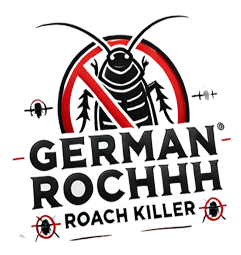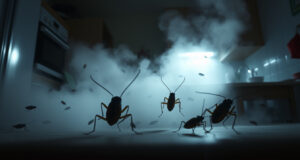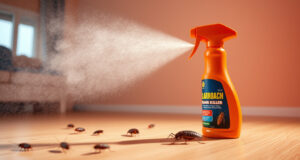If you face a pest problem, learn the German roach life cycle. The roach (Blattella germanica) is a common bug that lives indoors. It makes eggs fast and stays strong. Knowing each step of its life can help you guard your place.
In this text, we look at the roach cycle from egg to adult. We share simple ways to stop them.
What Is the German Roach Lifecycle?
The roach cycle is a chain of steps. The chain goes from egg to young to adult. This chain makes the roach hard to stop.
Roaches pass through three steps:
- Egg Stage
- Young Stage
- Adult Stage
Each step has its own look and span.
Stage 1: Egg Stage
A female roach lays a small egg capsule. The capsule holds 30 to 40 eggs. She hides it in cracks or behind a machine.
• Time: Eggs hatch in about 28 days. Warm spots can make eggs hatch in 20 days.
• Look: The capsule is hard and tan. It keeps eggs safe from many sprays.
• Note: One female can lay several capsules. This act makes the group grow fast.
Stage 2: Nymph Stage
After eggs hatch, young roaches, called nymphs, appear. They look like small adults but lack wings. They shed their skin five to seven times.
• Time: Nymphs stay for 40 to 125 days. Heat and food change this span.
• Look: Nymphs seem light at first. They grow darker with each skin shed.
• Act: Nymphs move and eat much. They spread dirt and can cause allergies.

Stage 3: Adult Stage
After shedding, roaches become adults. They show two dark lines on their back. Their wings cover most of their body, yet they do not fly much.
• Life: Adults live for about 100 to 200 days.
• Repro: Females lay eggs soon after they grow up. They keep the cycle fast.
• Night: Adults hide by day and move at night near warm, wet spots with food.
Why Know the German Roach Lifecycle?
The roach cycle is very fast. In a good spot, a roach can grow from egg to adult in just 50 days. Many groups can form in one year.
This fast growth and strong nature make them a tough foe in homes, shops, and clinics. By knowing the steps, you can hit the weak parts of their growth to cut their numbers.
Prevention Tips to Break the German Roach Cycle
Stop roaches by cutting off their home, food, and water. Try these tips:
1. Keep Things Clean
• Wipe floors, counters, and machines to remove crumbs and spills.
• Do not leave dirty dishes overnight.
• Throw out trash fast and close the bin tight.
2. Remove Water
• Fix leaks in pipes and taps right away.
• Do not let water sit in sinks or pet saucers.
• In wet spots like basements, use an air dryer.
3. Seal Cracks and Hiding Spots
• Seal cracks near baseboards, pipes, and cabinets with caulk.
• Close gaps in windows and doors to block entry.
• Keep clutter low to cut down on hiding places.
4. Use Traps and Baits
• Set bait near spots where roaches hide, like under sinks and behind machines.
• Use sticky traps to catch some roaches.
5. Inspect Often and Get Help
• Check kitchens and baths from time to time.
• Ask pest experts when you see a bad problem.
How to Target Each Step in the Life Cycle
Different steps need different tricks:
• Egg Stage: Use growth blockers that stop eggs from growing.
• Nymph Stage: Use gel baits and spray to lower young roach numbers.
• Adult Stage: Use clean work, baits, and spray to reduce egg laying.
Frequently Asked Questions (FAQs) About the German Roach Lifecycle
Q1: How long does the cycle take from egg to adult?
A: It takes 50 to 90 days. Warm and wet spots make it faster.
Q2: Where does the roach lay eggs?
A: A female hides her capsule in cracks, crevices, or near food and water.
Q3: Which step is easy to target with pest control?
A: Eggs stay safe in their capsule but can be hit by growth blockers. Young roaches move and eat, so baits and sprays work well. Adults can be hit by clean work and spray.
The Bigger Picture: Why Roaches Are a Health Concern
Roaches do more harm than make noise. They spoil food and surfaces. They can bring germs like Salmonella and E. coli. They can cause allergies and make asthma worse in kids.
Their fast cycle and love for human spaces mean that quick care is needed.
Conclusion
Knowing the roach cycle shows why these bugs are hard to stop. We see each step: egg, young, and adult. With this clear view, you can cut the cycle.
Keep your place clean, dry, and sealed. Use baits and ask for help if the problem stays. Act early with this knowledge to keep your space free of roaches.




